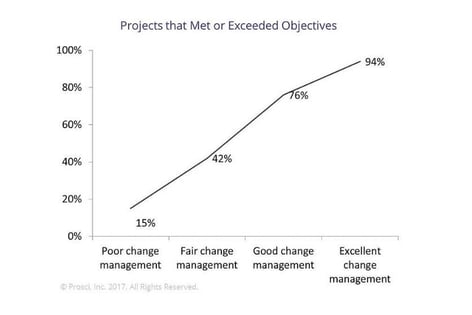- Blog
- The Earlier the Better - 2 Steps to Successful Change Management
The Earlier the Better - 2 Steps to Successful Change Management
A recent industry survey asked more than 500 practitioners what they would do differently in their next change management project. “Start the process sooner” was among the top answers.
“We did do change management,” the project sponsor said as they reflected on the hiccups in employee adoption of their company’s new Purchase-to-Pay solution. “Only, we didn’t start it soon enough.”
So how do you identify the right time to start change management to ensure effective adoption of a P2P system? When the system is selected? When the implementation kicks off?
“No” and “No way.”
The right time is as soon as the organisation commits to a change.
What’s at risk?
There’s a tendency among project leaders to want to wait for more information to become available about the possible solution before introducing the idea of change. They’re trying to play it safe, get all their ducks in a row, and have all relevant information organised before getting started. However, this is flawed thinking. If you continue to put off implementing change management, your organisation could face issues such as:
-
Ineffective training because it’s rushed, leading to poor adoption
-
Decreased employee trust due to perceived lack of transparency
-
Knee-jerk resistance because the solution feels forced upon users
-
Delayed solution ROI
It’s best to start early despite not having all the details at the beginning. There are two primary benefits to starting early-getting your team on the same page and determining a plan of action for your processes.
1. Gain your team’s trust
You have the opportunity to gain valuable input beyond the key stakeholders to help shape the solution itself. When you give your future user group an opportunity to participate in solving the problem, you inherently start earning their trust and getting their buy-in, which makes the change – when it inevitably comes – easier to digest. At the end of the day, employees want transparency. The best way to give them that is to be truthful and be prepared to answer their questions such as:
-
“What does this transition mean for me?”
-
“Should I be worried about my job?”
-
“Will my department be affected?"
The more prepared you are to answer these questions fully and honestly, the more likely your organisation will be to get employees on board with the change. Sure, you’ll always have the naysayers but preparing early and starting change management as soon as possible helps you identify those difficult personalities and gives you more time to take special actions to win them over. And, if need be, neutralise the negativity or remove them from the change altogether.
2. Determine processes, define goals
Implementing a purchase-to-pay system is about more than automating existing processes. Proper change management should embrace process changes that gravitate your organisation to best practices. The time to design process change is not when your solution provider is onsite collaborating with you on system configuration. This will result in hasty, poorly made decisions that you may have to live with for years to come and that may cause pushback among certain stakeholders who hadn’t been properly involved.
It’s critical to define your goals and to-be processes early on, which will help guide you toward the best solution fit for your organisation – and an efficient implementation.

How Basware helps with change management
Here at Basware, every customer is different, but all have something in common: employees who resist change. We have seen customers struggle with user adoption and have developed a variety of change management services, based on what we’ve learned through thousands of implementations.
Basware recognises that superior software is not enough. If users don’t use the solution, it’s worthless. Whether its workshopping with your core team to map out a change management plan or actually driving the execution of the plan, Basware offers change management services that can be custom fit to our customers’ situation. We give deep consideration to your culture, methods of internal communication, who gets brought into the loop and when, and most importantly the message of “what’s in it for you.”
Ready to learn more?
Making a change in your P2P ecosystem? Get started with a change management plan now. Read more in our whitepaper. Contact us to learn more!
Subscribe to the Basware Blog!
Related
-
By Adam LustigThe Integration Pyramid: Build It Right, Scale It Fast
-
By Jon StevensConnect the Dots Between AP and Your S/4HANA Migration
-
By Christopher BlakeComplexity to Clarity: Forrester's Expert Take on AP Invoice Automation
-
By Basware RepresentativeThe route to logistics software harmony for finance, AP and procurement
-
By Basware Representative7 Half-Truths Purchase-to-Pay Providers Are Telling You
-
By Basware RepresentativeHow to create procurement visibility from day 1
-
By Basware RepresentativeRenaming the P2P Process – PN2P
-
By Basware RepresentativeRedefining P2P: Improving Your Purchasing Strategy
